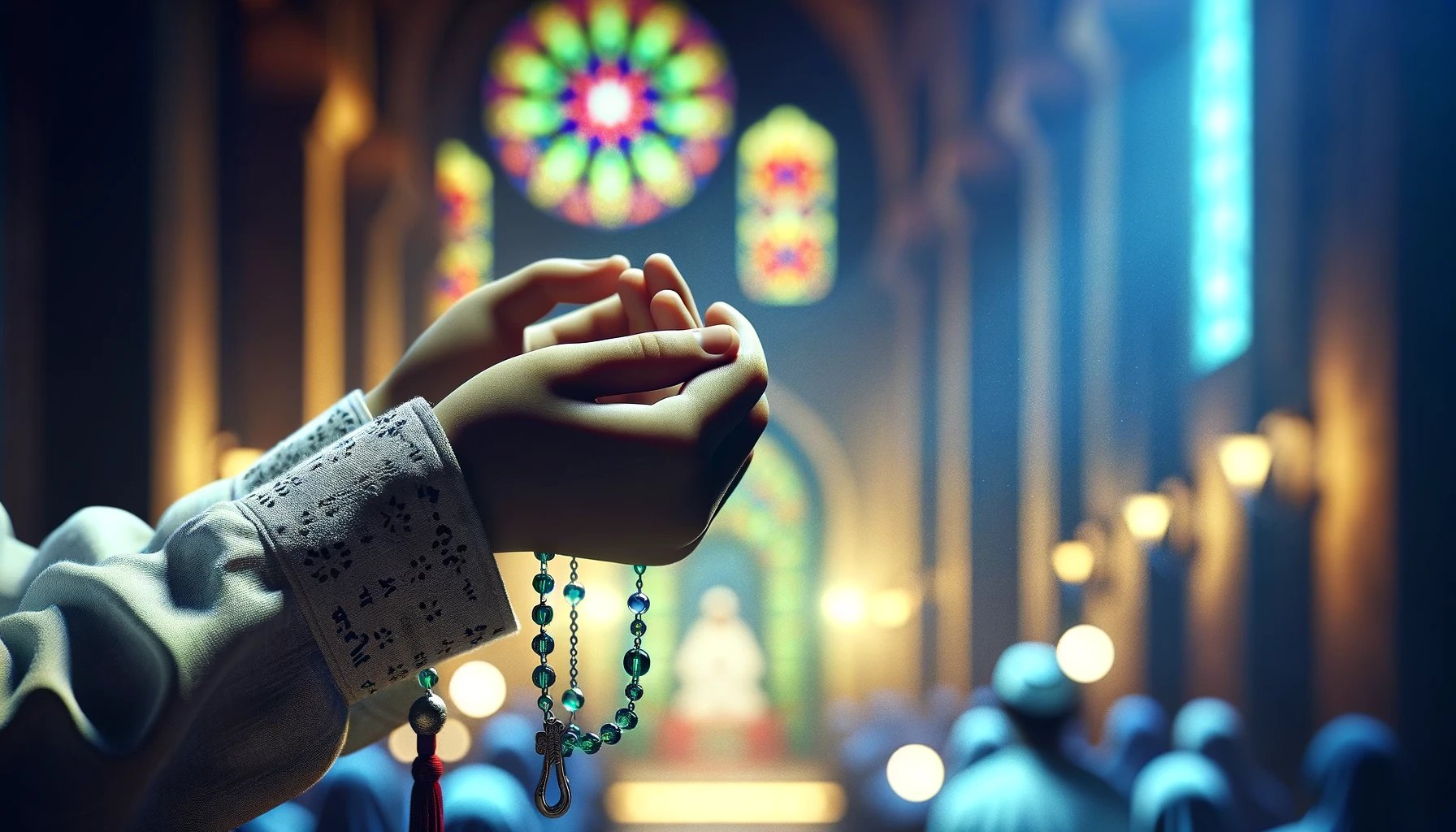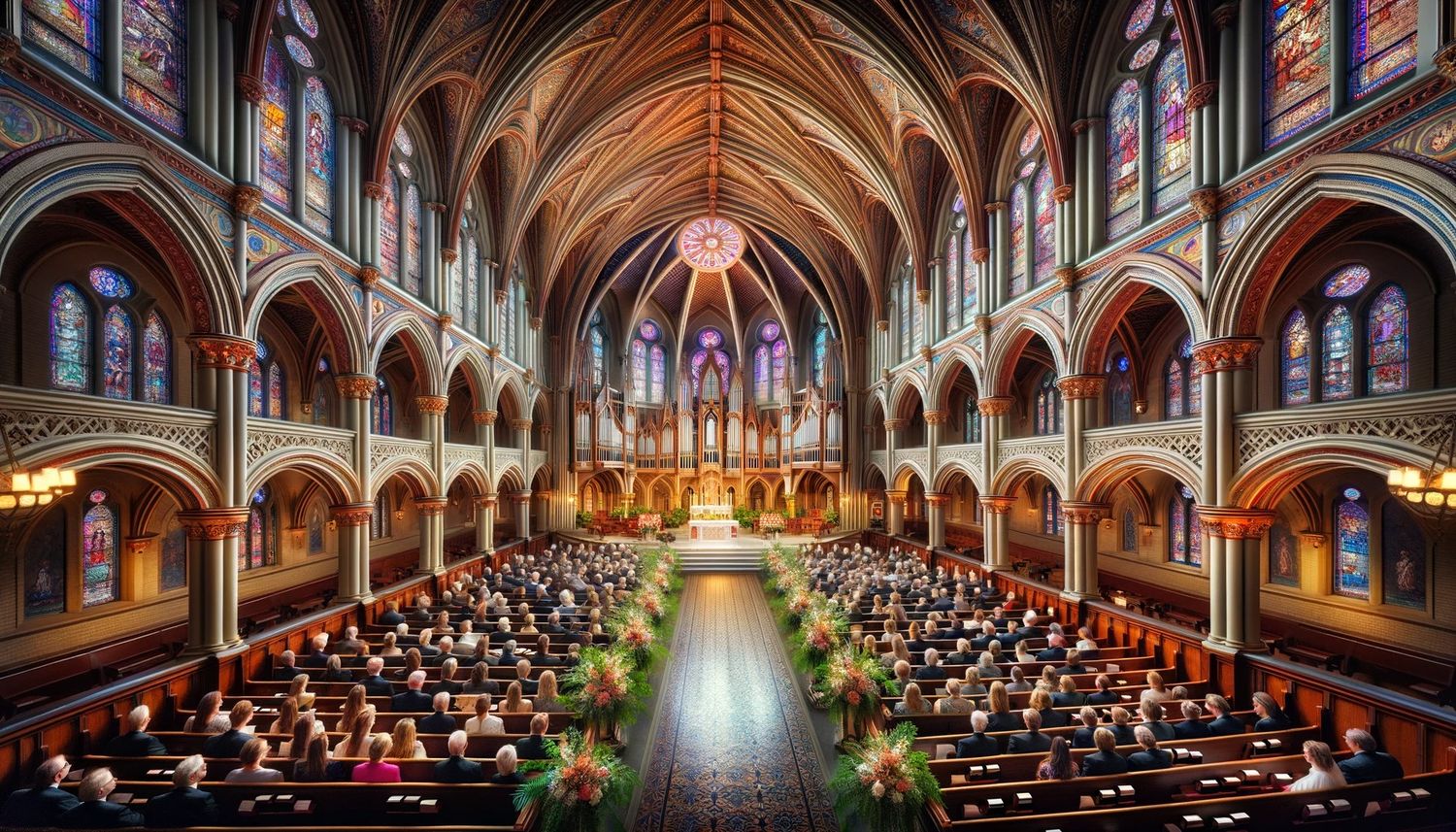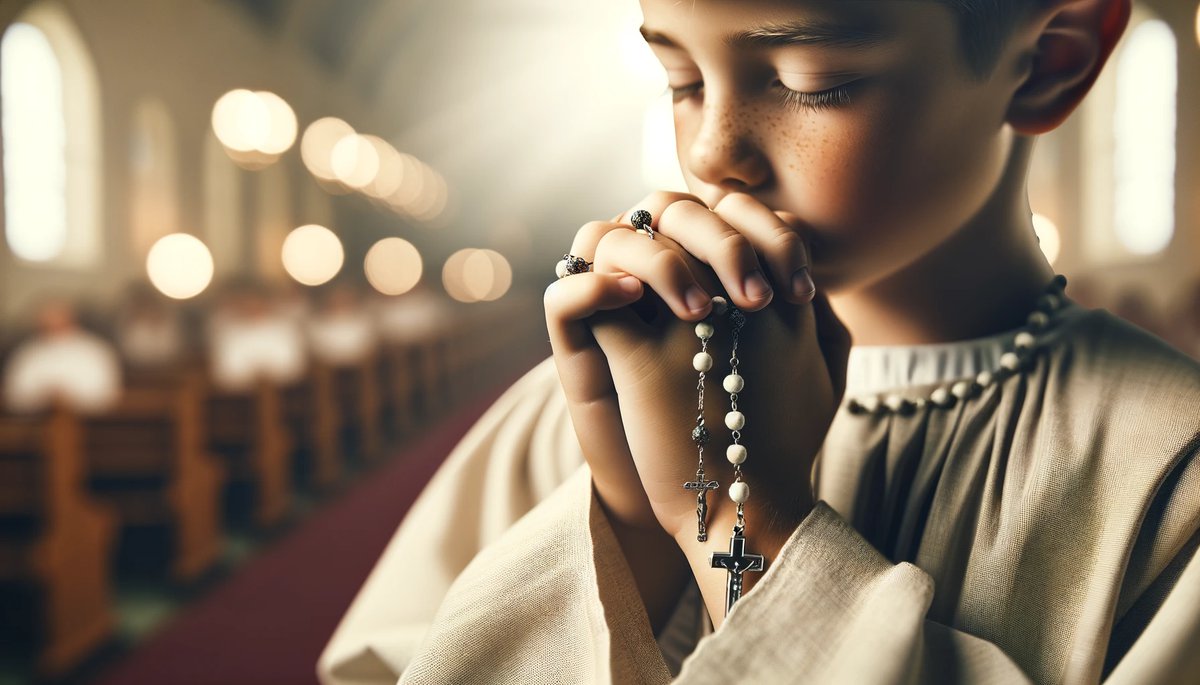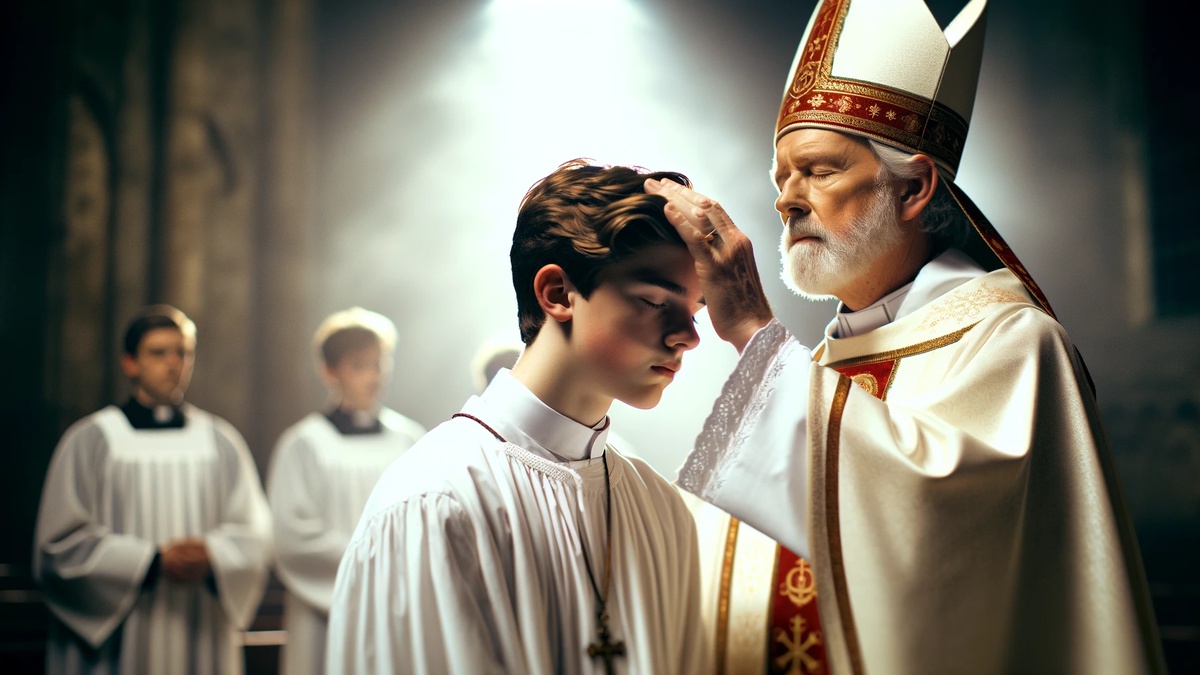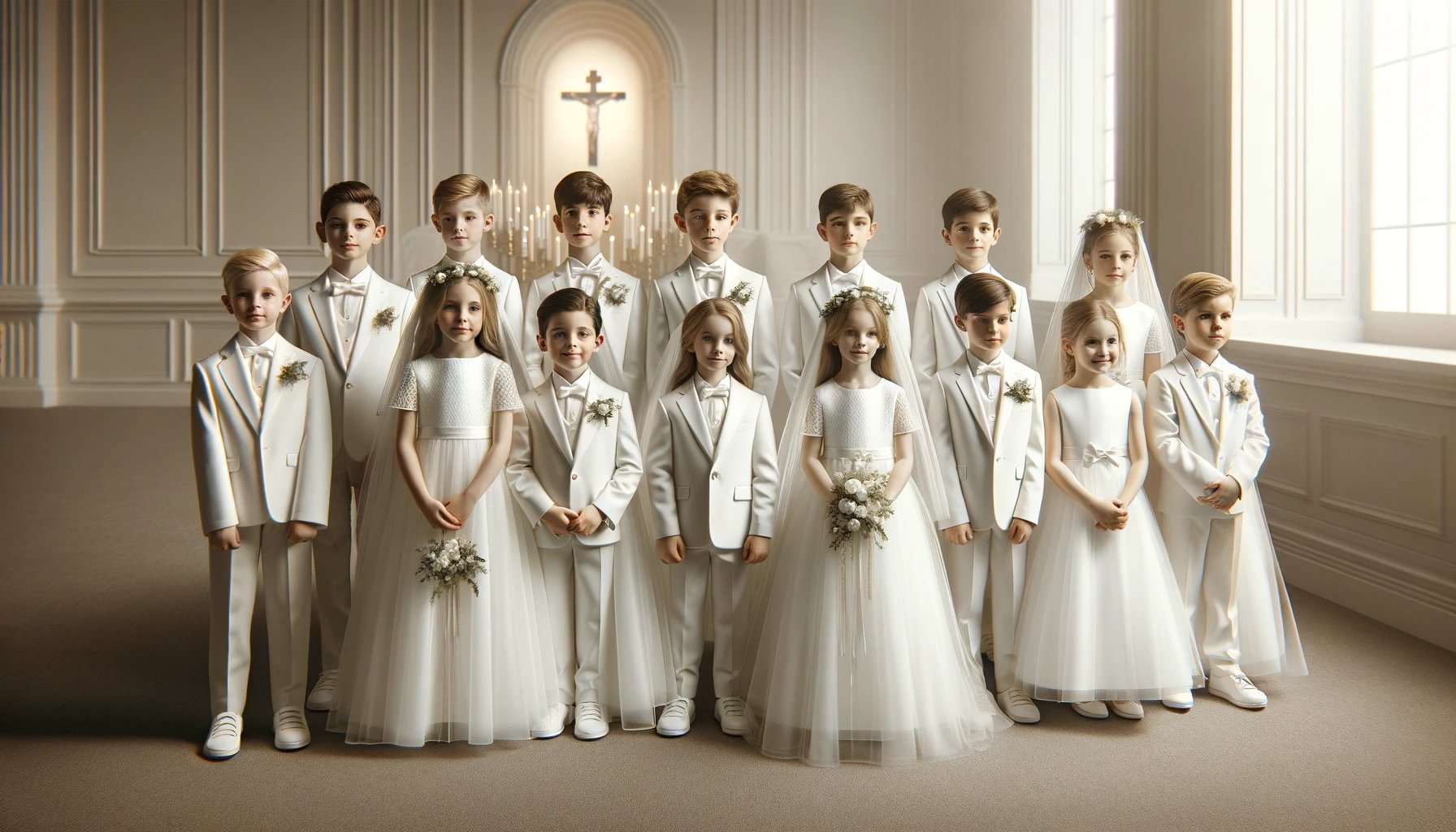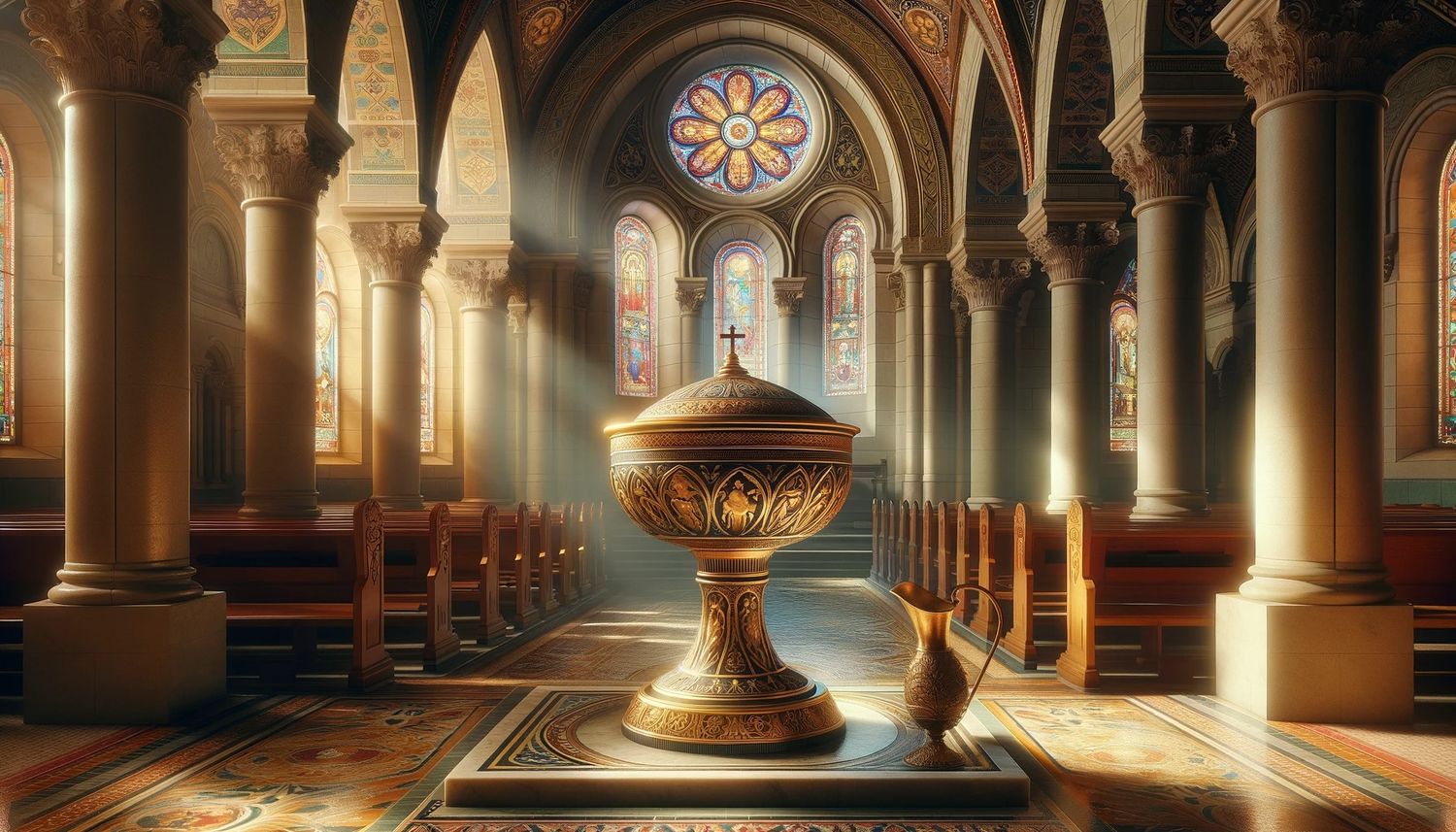Home>Theology and Spirituality>How Long Is A First Communion Ceremony


Theology and Spirituality
How Long Is A First Communion Ceremony
Published: February 24, 2024
Peter Smith, Editorial Director at Christian.net, combines deep insights into faith, politics, and culture to lead content creation that resonates widely. Awarded for his contributions to religious discourse, he previously headed a major organization for religious communicators, enhancing dialogue on faith's societal impacts.
Discover the duration of a first communion ceremony and its significance in theology and spirituality. Learn about the length and traditions of this important religious rite.
(Many of the links in this article redirect to a specific reviewed product. Your purchase of these products through affiliate links helps to generate commission for Christian.net, at no extra cost. Learn more)
Table of Contents
Introduction
First Communion is a significant milestone in the lives of many young Christians, marking their initiation into the sacramental life of the Church. It is a sacred and joyous occasion that holds deep spiritual significance for both the children and their families. As a time-honored tradition, the First Communion ceremony is a cherished rite of passage that is steeped in history and tradition.
The First Communion ceremony, also known as the Eucharist, is a central sacrament in the Christian faith, symbolizing the reception of the body and blood of Jesus Christ. For many children, this event represents a pivotal moment in their spiritual journey, as they partake in the Eucharist for the first time, signifying their growing understanding of and commitment to their faith.
This sacred event is often celebrated with great reverence and festivity, as families and communities come together to witness and support the young communicants. The ceremony itself is a blend of solemnity and celebration, creating a memorable and meaningful experience for all involved.
In this article, we will delve into the history of First Communion, explore the typical length of a First Communion ceremony, discuss the factors that can influence its duration, and provide valuable tips for planning a memorable and spiritually enriching First Communion celebration. Whether you are a parent, a church leader, or someone preparing for their own First Communion, this guide aims to offer insights and guidance to ensure that this sacred occasion is both reverent and joyous.
Read more: How To Celebrate A First Communion
The History of First Communion
The history of First Communion is deeply rooted in the traditions of the Christian faith, with its origins dating back to the early days of the Church. In the early Christian community, the Eucharist, or Holy Communion, was a central aspect of worship and spiritual life. The act of partaking in the body and blood of Christ was regarded as a sacred and transformative experience, symbolizing the unity of believers with Christ and with one another.
The concept of First Communion as a specific rite of passage for young members of the Church began to take shape in the Middle Ages. During this time, the age of reason, typically around seven years old, was considered the appropriate age for children to receive the Eucharist for the first time. This age was chosen based on the belief that children of this age were capable of understanding the significance of the sacrament and participating in the life of the Church.
The First Communion ceremony evolved as a way to formally initiate young members into the full participation of the Eucharist and the life of the Church. It became a significant milestone in a child's spiritual journey, marking their progression from mere observers of the Eucharistic celebration to active participants in the sacramental life of the Christian community.
Over the centuries, various customs and traditions surrounding First Communion developed within different Christian denominations. These traditions often reflect the cultural and religious practices of the communities in which they are observed. Despite these variations, the underlying significance of First Communion as a sacred and joyous occasion has remained constant across different Christian traditions.
Today, the history of First Communion continues to shape the way this important sacrament is celebrated and understood. It serves as a reminder of the enduring significance of the Eucharist in the lives of believers and the importance of nurturing the faith of young members within the Christian community.
The history of First Communion stands as a testament to the rich tapestry of traditions and beliefs that have shaped the Christian faith throughout the ages, underscoring the timeless importance of this sacred sacrament in the spiritual development of believers, both young and old.
The Typical Length of a First Communion Ceremony
The typical length of a First Communion ceremony can vary depending on several factors, including the religious denomination, cultural customs, and specific traditions observed within a community. Generally, a First Communion ceremony lasts between 45 minutes to an hour, encompassing a blend of solemn rituals, prayers, hymns, and the reception of the Eucharist.
The ceremony often begins with a processional, during which the communicants, dressed in their First Communion attire, enter the church accompanied by their families. This symbolic entrance signifies the children's readiness to participate in the sacrament and is a poignant moment for both the communicants and their loved ones.
Following the processional, the ceremony may include readings from the Bible, prayers of intercession, and hymns that reflect the significance of the Eucharist in the Christian faith. These elements contribute to the reverent atmosphere of the occasion and provide opportunities for reflection and spiritual contemplation.
The heart of the First Communion ceremony lies in the reception of the Eucharist by the communicants. This sacred moment, often preceded by a period of preparation and instruction, represents the culmination of the children's journey toward understanding and embracing the significance of the Eucharist in their lives. As the communicants approach the altar to receive the body and blood of Christ, the solemnity and sanctity of the occasion are palpable, creating a deeply meaningful experience for all in attendance.
In addition to the reception of the Eucharist, the ceremony may also include a homily or a brief sermon delivered by a clergy member, offering spiritual guidance and encouragement to the communicants as they take this important step in their faith journey.
The First Communion ceremony typically concludes with a recessional, during which the communicants and their families exit the church, often accompanied by joyful music and expressions of celebration. This marks the culmination of the formal ceremony and the beginning of festive gatherings and receptions to honor the communicants' achievement and the spiritual significance of the occasion.
Overall, the typical length of a First Communion ceremony encompasses a carefully orchestrated sequence of rituals and observances that honor the sacredness of the Eucharist and celebrate the spiritual growth of the young communicants within the Christian community. It is a time-honored tradition that holds deep meaning for those who participate, fostering a sense of reverence, joy, and spiritual fulfillment.
Factors that Can Affect the Length of a First Communion Ceremony
Several factors can influence the length of a First Communion ceremony, shaping the overall duration and the flow of the event. Understanding these factors is essential for planning a meaningful and well-organized ceremony that resonates with the spiritual significance of the occasion.
Number of Communicants
The number of children receiving their First Communion during a single ceremony can significantly impact its length. Larger groups of communicants may require additional time for the reception of the Eucharist, individual blessings, and the logistical coordination of the procession and recessional. Conversely, smaller groups may allow for a more streamlined ceremony with fewer logistical considerations.
Read more: How Many Godparents For First Communion
Liturgical Traditions
The specific liturgical traditions and customs observed within a religious denomination can also influence the length of the First Communion ceremony. Different denominations may have varying practices regarding the order of service, the inclusion of specific prayers or rituals, and the duration of musical elements such as hymns or choral performances. These liturgical nuances can contribute to variations in the overall length of the ceremony.
Cultural Customs
Cultural customs and traditions within a particular community can play a role in shaping the length of a First Communion ceremony. Some cultural practices may involve additional ceremonial elements, such as processions, presentations of gifts, or cultural performances, which can extend the duration of the event. Conversely, certain cultural customs may prioritize simplicity and brevity, leading to a more concise ceremony.
Musical Selections
The choice of musical selections, including hymns, instrumental pieces, and vocal performances, can impact the duration of the ceremony. Longer musical interludes or a greater number of musical pieces may extend the overall length of the event. Conversely, a more streamlined musical program can contribute to a more succinct ceremony.
Clergy Involvement
The level of clergy involvement and the inclusion of specific liturgical roles, such as deacons, acolytes, or additional clergy members, can influence the pacing and duration of the ceremony. The participation of multiple clergy members in various aspects of the service may require additional coordination and can contribute to a longer overall duration.
Read more: How To Prepare For First Holy Communion
Additional Rituals or Presentations
Some First Communion ceremonies may incorporate additional rituals, presentations, or symbolic acts that can affect the length of the event. These may include special blessings, the presentation of gifts to the communicants, or other ceremonial gestures that add depth and meaning to the occasion but also contribute to the overall duration of the ceremony.
By considering these factors, organizers and participants can thoughtfully plan and prepare for a First Communion ceremony that honors the spiritual significance of the Eucharist while accommodating the unique elements that may influence its length. Balancing reverence, tradition, and practical considerations can contribute to a memorable and spiritually enriching experience for all involved.
Tips for Planning a First Communion Ceremony
Planning a First Communion ceremony is a significant undertaking that requires careful consideration of various elements to ensure a reverent, memorable, and spiritually enriching experience for the communicants and their families. Whether you are a parent, a church leader, or an organizer involved in preparing for a First Communion celebration, the following tips can guide you in planning a meaningful and well-executed ceremony:
-
Early Preparation: Begin the planning process well in advance to allow ample time for coordination, communication with clergy or church leaders, and logistical arrangements. Early preparation helps alleviate last-minute stress and ensures that all aspects of the ceremony are thoughtfully considered.
-
Clear Communication: Maintain open and clear communication with the communicants' families, clergy, and any individuals involved in organizing the ceremony. Providing clear guidelines, timelines, and expectations can help streamline the planning process and ensure that everyone is well-informed.
-
Meaningful Preparation Programs: Offer comprehensive and meaningful preparation programs for the communicants, including catechesis, spiritual formation, and guidance on the significance of the Eucharist. These programs can deepen the children's understanding of the sacrament and foster a sense of reverence and anticipation leading up to the ceremony.
-
Attire and Symbols: Coordinate the selection of First Communion attire and symbols, such as veils, suits, or other traditional garments, in a manner that reflects the solemnity and significance of the occasion. Pay attention to cultural and familial customs while ensuring that the chosen attire aligns with the reverence of the ceremony.
-
Logistical Considerations: Plan the logistics of the ceremony, including the procession, seating arrangements, and any special presentations or rituals, with careful attention to detail. Consider factors such as the number of communicants, the layout of the worship space, and any specific requirements for the reception of the Eucharist.
-
Music and Liturgy: Select appropriate musical pieces, hymns, and liturgical elements that enhance the spiritual atmosphere of the ceremony. Collaborate with musicians, choirs, and clergy to ensure that the musical and liturgical selections align with the reverence and joy of the occasion.
-
Inclusive Participation: Encourage the active participation of the communicants, their families, and the broader faith community in the planning and execution of the ceremony. Involving various stakeholders can foster a sense of shared ownership and spiritual unity in the celebration.
-
Reception and Celebration: Plan post-ceremony receptions or gatherings that honor the communicants and provide opportunities for joyful celebration and fellowship. Consider incorporating meaningful traditions or activities that further emphasize the spiritual significance of the First Communion.
-
Photography and Documentation: Coordinate guidelines for photography and documentation during the ceremony to ensure that the sacredness of the occasion is respected while allowing families to capture meaningful memories. Establishing clear expectations regarding photography can help maintain the reverent atmosphere of the event.
-
Spiritual Support: Provide spiritual support and guidance to the communicants and their families throughout the planning process, offering pastoral care, resources for prayer and reflection, and opportunities for spiritual preparation leading up to the ceremony.
By incorporating these tips into the planning process, organizers can create a First Communion ceremony that honors the sacredness of the Eucharist, celebrates the spiritual growth of the communicants, and fosters a sense of reverence, joy, and unity within the faith community. Each aspect of the planning process contributes to the overall richness and significance of this cherished rite of passage in the lives of young Christians.
Conclusion
In conclusion, the First Communion ceremony holds profound significance as a pivotal moment in the spiritual journey of young Christians. Rooted in rich historical and religious traditions, this sacred rite of passage symbolizes the communicants' initiation into the sacramental life of the Church and their growing understanding of the Eucharist's profound significance. The ceremony typically spans 45 minutes to an hour, encompassing a blend of solemn rituals, prayers, hymns, and the reception of the Eucharist. However, the duration can be influenced by various factors such as the number of communicants, liturgical traditions, cultural customs, musical selections, clergy involvement, and additional rituals or presentations.
As families, church leaders, and organizers prepare for First Communion ceremonies, it is essential to approach the planning process with care, reverence, and attention to detail. Early preparation, clear communication, meaningful preparation programs, thoughtful selection of attire and symbols, and inclusive participation can contribute to a well-executed and spiritually enriching ceremony. Additionally, planning for post-ceremony receptions or gatherings, coordinating photography guidelines, and providing ongoing spiritual support to the communicants and their families are integral aspects of creating a memorable and meaningful experience.
The history of First Communion serves as a testament to the enduring significance of the Eucharist in the lives of believers and the importance of nurturing the faith of young members within the Christian community. By honoring the traditions and customs associated with First Communion while embracing the diversity of cultural and liturgical practices, communities can create ceremonies that resonate with the spiritual depth and joy inherent in this sacred occasion.
Ultimately, the First Communion ceremony represents a profound moment of spiritual growth, unity, and celebration within the Christian faith. It is a time-honored tradition that not only marks a significant milestone in the lives of the communicants but also fosters a sense of reverence, joy, and spiritual fulfillment within the broader faith community. As this cherished rite of passage continues to be celebrated and cherished, it serves as a poignant reminder of the enduring importance of the Eucharist and the spiritual journey of believers, both young and old.

